For centuries the Nabataeans moved goods in the desert by camel caravan. The camel was the backbone of their merchant enterprise, and it is only through understanding the camel, that we can better understand the Nabataeans. While the Nabataeans are mostly remembered in the west for the ancient city of Petra, the Nabataeans themselves etched graffiti on many of the rocks and wadi walls of the Middle East. Many of these inscriptions bear reference to or pictures of camels and are the items that the common people left behind in their own memory.
As one begins to understand the camel, and how the life of desert merchants revolved around the camel, much like the life of the Bedouin of the last century revolves around the camel, then many obscure aspects of Nabataean life come to light.
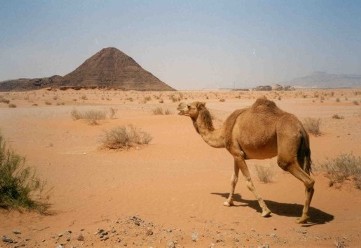
A Camel in Wadi Rum
Origin of the Arabian Camel
The Bedouin of Arabia have a strange legend about the origins of the camel. According to them, it was the Jews, not the Bedouins who had camels first in antiquity. The legend says that the Jews lived in the mountains of the Hijaz, while the Bedouins lived in the deserts. They Bedouins kept horses and rode them in their raids, but they avoided the mountains for fear of losing their way in the mountainous ravines. For some reason, the Bedouins once mounted a raid on the Jews in the mountains, because they had a guide who claimed to know every mountain and pass. But the Bedouin had no sooner entered the mountains that their guide lost his way and they began to wander aimlessly. After several days, they became so starved that they killed some of their horses and ate them. After some time, they came across a traveler who led them by night along winding canyons until they came to a plain where the Jews lived.
When they came to the plain, surrounded by hills, they discovered the many tents of the Jews. In front of the tents were strange animals that the Bedouin had never seen before. These were camels, known to the Bedouin as al-vil. The Bedouins hid until sunrise and then attacked the Jews in the early morning by surprise. The Jews fled by every possible means, and with them, they took their female camels, which the Bedouin call maghaatiir. The Bedouin then looted the Jew’s tents, and what camels remained. They noticed that all the camels that remanded were zurq camels, those which had some black hairs mixed in with their white coats. These camels had not fled with their masters and the Bedouin were loath to keep them. Their leader ordered the camels slaughtered because they had remained behind their masters. The Bedouin then chased the group of Jews, defeated them, and took their female camels. Since that time the Jews have had no camels to raise, and instead became farmers or tenders of sheep and goats. The Bedouin however slaughtered all white camel calves with black hairs from that day forward. The Bedouin also say that the Jews used to fill containers with water, and put them outside their homes, hoping their camels would return. From this story the ancient Bedouin proverbs developed for something one does not expect to attain or achieve, rajw al-hihuud min al-bil. or “the Jews hope for the camels.”
Zoologists tell us that the camel is not of Arab origin despite it’s long connection with Arab life. They maintain that in earliest times, before its domestication the camel was unknown in Arabia. Its original habitat was America, where fossils of ancient camels are found, along with the camel’s close brother, the Llama survived. (Hitti, Jurji, and Jabbur, *History of the Arab*s page 22)
The Camel’s History
Camel fossils are also found in India, Kashmir, and Algeria. There is a good possibility that the camels of Arabia were originated in North Africa. (Arthur G. Leonard, The Camel, London and New York, 1894, page 2)
Scholars state the earliest known representation of the camel dates back to the Stone Age. This is found in two carvings in a place called Kilwa in Jabal Tubayq on the eastern boarder of Jordan. In one of the inscriptions the camel appears clearly in the background behind an ibex, and is of the same single humped variety known today as the Arabian camel. (Hitti, History of Syria, page 52)
It is interesting to note that the camel is hardly ever mentioned in any of the Assyrian texts, even though they contain tens of thousands of letters and economic narratives dating from between 1800 to 1200 BC. (Harold A. McClure, The Arabian Peninsula and Prehistoric Populations, Miami, 1971, page 49, and Gauthier-Pilters, Hilda and Dagg, The Camel, pages 115-116)
It seems that the camel must have been domesticated in North Africa and then made its way into Arabia during antiquity. Some have speculated that it may have been Abraham that brought camels from Egypt to Arabia, but there is no evidence to substantiate this.
There is a picture of a camel, with a rider on its back, found in the ruins of Tall Halaf in Iraq, which dates back to between 3000 and 2900 BC. (M.F. von Oppenheim, Der Tell Halaf, Leipzig, 1931, page140). In Byblos, in Lebanon, small Egyptian figurines of camels have been found that dates back to around 2500 BC.
The Old Testament tells us in Genesis 12:16 that Abram had camels in Egypt. Later in Genesis 24:10-11, 30:43; 31:3 also mention camels in relation to Abraham’s family life.
In the biblical story of Joseph (Genesis 37:25) tells us of the Ishmaelites who used camels to carry tragacanth gum, spices, balsam and myrrh to Egypt. Later in Judges 7:12 we read how Gideon killed who of the leaders of the Midianites, Amalekites and the other people of the east, who had innumerable camels. Gideon took the crescent shaped ornaments that were on the necks of the camels. (8:21). It also mentions that the camels of the easterners had collars on their necks. (8:26)
The Bible also mentions camels in the account of the queen of Sheba, and in the book of Job, who had 3000 camels before his troubles and 6000 afterwards. (Job 1:3, 42:12). The Bible also mentions that the Reubenites and Gadites and the half tribe of Manassa plundered 50,000 camels from the Hagarites. (I Chronicles 5:18-21)
Later, the Assyrian king Salmanasser III left an inscription with reference to his campaign into Syria and his clash with the armies of its rulers at Qarqar, north of Hamah in 855 BC. The inscription mentions that he destroyed ten thousand camels of Gendibu (Jundub) the Arab (Hitti, History of the Arabs, page 37).
It seems that by this time the camel was already an indispensable part of Arabian life.
Camels and Bedouin
Arab poets have often called the camel the ‘ship of the desert.” Long ago, Saydah Dhu alRumma said that his she-camel was a safiinat al-barr or land ship. His poem stated “a land-ship whose reins beneath my cheek are passed.” (Dhu lRumma, Diwan, edited by Charlile Henry Hayes Macartney, Cambridge, 1919, page 638)
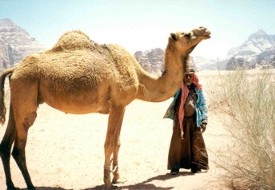
A Camel in Wadi Rum with Arab man
The camel has several features that make it ideally suited to desert life. Its feet have wide pads with slimly built legs that help it move easily over the desert. It can tolerate thirst for long periods, and can eat the tough thorny shrubs in the desert that even sheep and goats pass over. This is possible because their lips have tough stiff hair that permits it to nose through thorny plants and root them out or break them off. Its mouth is also specially adapted to chewing and digesting these thorny bushes.
The Bedouin use the camel for many purposes, including transport, meat, milk, and sometimes they make use of their skins.
Types of Camel
Today, there are two main types of camels, the two-humped camel known as the Bactrian (Camelus bactrianus) and the Arabian one-humped camel known as the dromedary (camelus dromedarius). The dromedary lives only in North Africa and Arabia. If a female dromedary is crossed with a male Bactrian, this may produce young with two connected humps. The dip between the humps becomes so indistinct that it looks like one long hump with two small domes on it. (Gauthier-Pilters, Hilda and Dagg, The Camel, Plate 50)
The camel is usually amber brown in color, but there are many white and black camels as well. Camels in Arabia are often classified into two categories, common and thoroughbred. It is common for Arabs to name their camels after some characteristic of the camel, such as it’s color, speed, shame etc. The Bedouin have special names for the different parts of the camel.
sanaam - hump
sulb - back
ghaarib - shoulders
‘adud - front leg above the knee
farsam - the foot
khuff - soles of the feet
‘arnuun - the bridge of the nose
khashm - nose
burtam - snout
hijaaj - forehead
manhar - lower part of the neck
dar’ - udder
shabiib - tip of the tail
Halama - teats of the udder
(The list above is taken from Musil, Manners and Customs page 335, and cross checked with present day Bedouin in the south of Jordan).
The Bedouin say that there are two types of Arabian camels: common camels and thoroughbreds. The thoroughbreds have a noble pedigree and descend from well known and distinguished bloodlines and from certain regions.
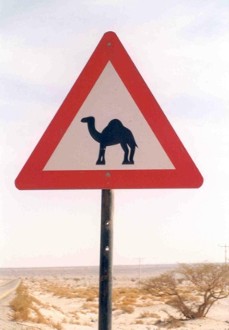
undefined
Camels and Water
During the winter, the camel can go fifty days without being watered, while in the heat of the summer it may only go five days without water. (Kut Schmidt-Nielsen, The Psychology of the Camel, Scientific American, 201.6, December 1959, page 140-151.) In the winter the camel can graze on the many green plants which contain enough moisture to enable the camel to go without water. However, if it had a choice, the camel would water every couple of days in the winter and every day in the summer.
When a thirsty camel smells water, it rushes to the water, fights, and struggles to overcome anything in its way. Sometimes watering troughs are broken or knocked over from frenzied camels rushing for water.
Many of the desert Bedouin water their camels only every three days. Camels are given water to drink in the evening, and then again on the morning of the second day, and then after three days. Camels watered in this way are called khamiir.
When a camel goes too long without water, it’s eyes fill with tears, they refuse to graze, and they begin to moan. When they try to urinate and cannot, it is essential that they are taken to water. Their urine becomes very thick, and the camels can loose about a quarter of their body weight before they will die. As the camel dehydrates, part of its hump wastes away. The hydrogen contained in the hump is released, combining with oxygen to create water for the camel. When the hump is wasted away, the camel dies. (Leopold, page 98)
A thirsty camel can drink up to eighty liters of water in one session, and can drink up to twenty liters in one minute. The Bedouin often sing or chant while the camels drink, as they believe it helps them drink to their full.
In the wintertime, rain in the desert flows to the lower areas and collects in pools, which the Bedouin call khabraat. Some of these pools are very large, like large ponds, while others are only a few hundred liters of water. Often times, water-skins are left beside these pools, and in the summer, when the water has all evaporated, the casual visitor may wonder why water-skins or plastic pails are left to lie in the desert.
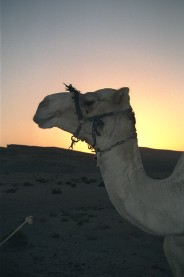
Camel in Sunset
It used to be rumored that the camel had a special stomach for holding water. (Gauthier-Pilters, Hilda and Dagg, The Camel, page 69-71, and also Leopold, The Desert, page 98, tell of how Pliny was the first to conjecture that the camel has an extra stomach for water, and later writers copied this idea.)
This idea, however, is not true, but in the first and second stomach of the camel, there are cavities which can hold a certain amount of water which is not mixed with food, since most of the food immediately moves on to the third stomach.
It is said that on one occasion, as recorded by Ashurbanipal, the Arabs slit open the bellies of their camels to get out water and quench their thirst. (Daniel D. Luckenbill, Ancient Records of Assyria and Babylonia, Chicago, 1927, II, 317-318, no 827, and Hitti, History of the Arabs, page 149, n. 6) In the history of the Arab conquests, it is recorded how Khalid ibn al-Waliid, ordered by Abu Bakr to go from Iraq to Syria to assist the Muslim armies there, marched until he reached Siwa. At this point in the account there is a clear reference to how Khalid, fearful lest his army perish from thirst as it crossed he desert, proceeded to allow the riding camels that were with him to go thirsty, then watered them and cut their lips so they would to ruminate. Setting out across the desert, he slaughtered these camels one after the other, as al Balaaduri tells us, and he and his companions drank the water from their stomachs. (Al Balaadhuri, Futuuh al buldaan, edited by M.J. de Goeje, Leiden, 1866, page 110, and also similar accounts in Ibn Qutayba, ‘Uyuun al-akhbaar, I, 142, al Tabari, Tariikh, I, 2111-2112)
This custom is carried out by the Bedouin to this day, although it is used only in desperate circumstances. It is also possible for the Bedouin to remove the camel’s cud from its mouth, and squeeze the water out of it, in order to get some liquid. This liquid then needs to be strained through a finely woven cloth and left in a container to stand motionless until the material in it settles to the bottom.
I also spoke to several men who had traveled in the North African deserts, and who had relied on making tea out of strained camel urine. They did this, again out of desperation.
Schmidt-Nielsen published a special article on the camel that indicated that the camel retains more moisture in its body than most other large animals, and that this moisture does not evaporate from it’s hide in the form of perspiration to the extent that it does in other animals. Added to this, the camel’s body alters its temperature up to 12 degrees, when during the day it can be around 105 and at night around 93. When the body temperature of the animal rises, it does not perspire as much. In addition, the fir on the camel also helps it retain moisture, just as the Bedouin wear woolen clothing, even in the summer.
Camels and Food
The camel is a strange animal. It seems to lack the perception that wild animals have, for finding it’s own food. Often Bedouin go with their camels to show them where foraging may be found. Other times, when the camels are reasonably well fed, they are simply allowed to wander. They may go for several days, before they return to their master for water.
The Bedouin prefer a desert shrub called hamd. This shrub has various names and varieties, and can be called such names as: arTa, uraynba, Hinwa, rughl, rimth, rawtha, zrayqa, sha’raan, TaHma, Damraan, ‘ajraam, ‘araad, and GhaDraaf. The other plant the camel loves, is khulla.
When the heat becomes intense, camels like to roll in the dirt. When they pass a patch of land with soft earth, they kneel down in it and begin to roll back and forth on their backs. In many cases, these places become common for camels to roll in, and a passing camel may roll, just because it is a place of rolling. First they will sniff the ground, then kneel down, and then begin to turn over on their back and necks, with their feet up in the air, as if trying to bathe in dust. Camels will frequently crowd together in a single-rolling ground, so expanding it’s size that in it sometimes covers an are of more than 100 meters in diameter. The Bedouins claim that this rolling strengthens and soothes the joints and has somewhat of a cooling and relaxing effect on the camel’s body.
Thoroughbred Camels
The Bedouin consider that there are two types of camels. Common camels, and thoroughbreds. Some claim that the thoroughbreds are descendants of a common female camel, who was left by her herdsman to sleep overnight out in the open country and a wild undomesticated bull came along and impregnated her. This is a probably only a legend, as there are no wild camels in Arabia, and those that run away from their masters usually die within a year.
On the other hand, the thoroughbred camel does come from a long line of careful breeding by Arabs, who breed for speed, size and strength. By careful breeding, the Bedouin have produced a race of excellent camels that have been used down through the centuries as war animals. The most famous thoroughbreds come from Oman, Qatar and Mahra in southern Arabia. These thoroughbreds were used by the ancient Arab tribes in their great conquests, and in their dazzling victories over the Persians and the Greeks. Indeed, as far back as Arab poetry goes, there are references to the thoroughbred camels.
As war camels, the thoroughbreds were often used with two riders, one to direct the camel, and the other to use a weapon such as a lance or a bow and arrow (marduufatan). Sometimes the second rider would hold the reigns of an unmounted horse, who could race along beside the camel. During the final attack, the second rider would mount the horse from the racing camel.
The thoroughbred camel was also useful in crossing barren country where other armies with horses required feed and water. This allowed the Bedouin to go where they pleased when they pleased, in the desert.
Camels and the Bedouin
A camel’s sense of sight and smell are it’s greatest downfall. Often they can be close to water or food and not see or sense it. For this reason Bedouin Arabs herd camels and direct them to food and water. When a camel becomes lost, it usually doesn’t sense that it is lost, and it keeps wandering on it’s same path until the herdsman comes to find it and takes it back to the others.
The Bedouin use the camel to scout out new grazing land before they move. The camel then changes to a pack animal, carrying tents, equipment and women and children.
Bedouin also live off of the milk of camels. For many Bedouin, milk replaces water in their diet, sometimes living off of several camels at a time. Often a young camel is killed and eaten, and the mother camel is milked each day. If the calf is not killed, then they share the mother’s milk, using one side of the udder for the calf and the other for themselves.
The milk of the camel contains a higher proportion of Vitamin C than cow’s milk, and a higher ratio of fat, protein and mineral content that either cow’s or goat’s milk. Gauthier-Pilters, Hilda and Dagg, The Camel, page164)
While it is possible to make milk and cheese from any milk, the Bedouin do not usually make butter from the milk. Bedouin traditionally use milk from sheep and goats, dry it, and keep it in fist size balls that resemble white rocks. This is known as jamiid cheese. When they want to use it, they simply break it up, and water, and grind it until it makes a cheese soup that they cook their meat in and pour over rice.
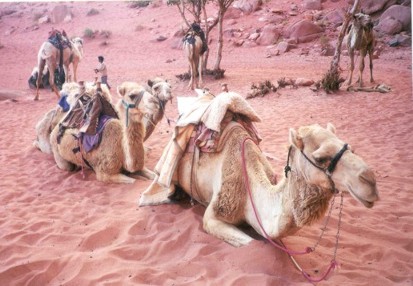
Kneeling Camels
The camel also supplies the Bedouin with a ready supply of meat. Often camels are slaughtered for an occasion, and the whole tribe partakes in the meal. Often a young camel is slaughtered, that has not been used as beasts of burden or for ploughing, as the meat of these animals is considerably tougher.
When a Bedouin wants to show the highest level of honor to a guest, a camel is slaughtered for him. Often the fat from the hump is kept, and rendered down into gee or and used for cooking or frying later.
Meat from the camel can be kept by cutting it into longs thin strips that dry in the sun, usually draped over a bush. From the hide of the camel, the Bedouin make containers to keep water in, and buckets to raise water from wells or pools, or even troughs to put water in for the camels to drink. From this hide, Bedouin also make sandals for themselves, as well as other leather items for the tent.
The fur of the camel is used to weave bags for gain of flour and to make tent panels for flaps, or to make an aba for the owner of the house, or a cover for the saddle of his horse. Usually the fur is only taken as the camel sheds its fur during the beginning of the summer. Often the women collect it before it falls out, and some try to hide it from the men and sell it secretly so they can buy bits of cheap jewelry.
Camel dung is used as fuel for fires in the winter, and sometimes for cooking food. Camel urine is often used as a hair wash to protect it from knits, and to give it a reddish hue. Some even drink the urine as medicine for certain diseases.
In the past, the mahr, or dowry given to a bride was paid by a fixed number of camels, depending on the social standing of the bride and her family, or the bridegroom’s ability to pay.
The Temperament of the Camel
Camels prefer to live in groups of their own kind, and like to travel in herds, as sheep and goats do. If it gets separated from the herd, a camel’s first concern is to rejoin the herd.
If a camel caravan comes to a river or a dangerous area, the herdsman only needs to force one of the camels to proceed and the others will readily join it. Even if the camel that had been the first to refuse to cross the spot in question will, when it sees the rest of the herd crossing, cross in turn behind it, so as to keep up with the group and remain part of it.
The camel is also a mild-mannered animal, except in certain cases during the mating season, or when it is being loaded. Free roaming camels in the caravan are usually well mannered, while camels tethered to a tread mill or used for plowing and other hard work sometimes are ill mannered.
Camels can be led to the point of stupidity, and is often prone to mishap in dangerous places. It cannot be trained as a donkey, dog, or horse, and is much less attentive that these other animals. The camel is also a coward, especially when compared to other animals its size.
Female camels also mourn the death of their young. So when young camel is slaughtered, the Bedouin often stuff the young’s skin with straw and place it in front of the mother so she can see and sniff it. This is called a baw.
Often a young camel from another mother is introduced to the mourning mother, and shares the milk of the two mothers, thus comforting the mourning mother. If this young camel dies, both of the mothers will mourn for it. The mourning usually lasts for ten days. (Doughty, I, 369)
Breeding of Camels
Female camels go into heat in late fall or early winter. Pregnancy lass for an entire year. The rutting bull, (haduur, or braying one) will murmur, foam at the mouth and bray as he stretches his head upwards. He then pursues ad flirts with the female camel, and tries to make her kneel down, until eager and aroused she drops to her knees and kneels down, spreading her hind legs and urinating. The bull then crouches over her,. Seven days later the herdsman will lead the female to the bull again. If she refuses to kneel or raise her tail, they consider her pregnant. (‘ashsharat). During her pregnancy the herdsman prevents her from eating kurb plants since these, they claim would lead to miscarriage.
Usually a single camel is born, however, is has been known to have twins. One bull is significant for breeding a herd of about twenty females. Two or three years may elapse before the female gives birth to another young.
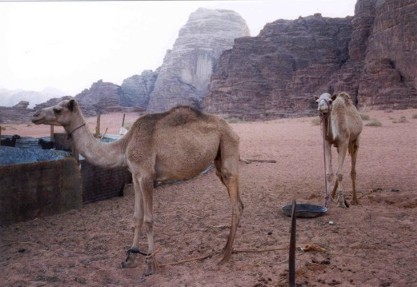
Hobbeled Camels
When the female is ready to give birth, she usually seeks an isolated spot, but the herdsman will bring her back to the tent or stay with her. The Female then kneels down on the ground, and the forefeet of the young appear first, then the head and the shoulders. (Doughty I pg. 369) When the entire young calf falls to the ground, the mother ruses and turns to nuzzle sniff and lick the calf. She may also cut the umbilical cord with her teeth if has not broken on its own, or if the herdsman has not cut it.
After two hours the young rises to its feet, and the Bedouin teach the calf to suck from his finger by smearing it with butter, gee or milk and putting it to the calf’s mouth so he can suck it. When the calf is accustomed to sucking fingers, he directs it to the mother’s udder. The calf will nurse freely for three months, and then it is kept away from the mother, so that it can only suck three times a day, and will become accustomed to grazing on small plants. This continues until the young one is a year old (or one and a half years) and then it is weaned. By this time, it has become accustomed to grazing on various plants and shrubs. The female’s udder has four teats, two of which are usually tied with two small sticks in order to save their milk until the evening, so that the family can drink it. The other two are left free for the calf to nurse.
Each year of the calf’s life, it takes on a new Arabic name.
Year Male Female
One Hiwaar Hiwaar
Two labanii labanii
Three Hajj Hajj
Four aJadh’ aJadh’
Five thanii (because it changes it’s teeth) thanii (because it changes it’s teeth)
Six rubii (and here it’s growth is complete) rubii (and here it’s growth is complete)
Seven jamal, naaqa also known as a rub’ when it can breed and bear young
Seventh sudaas sudaas
Eighth Shaqq al-naab
Ninth qaarih muTir qaarih faTir
The bull is called qu’ud until the sixth year, and after that a jamal. The female is a bakra until the sixth year and then a faaTir until the tenth. Sometimes these names vary between tribes. (Doughty, I, 401, Musil, Manners and Customs, pages 333-335, G. Boris, Le Chameau les Maraziq, inis 1951, page 63.)
The terms used by the Arabs for their camels can be counted in the hundreds. Ancient poets went to great length in describing it, and many similes, metaphors and parables revolve around it, and it is associated with things that were good and beautiful. (Jibrail Jabbur, The Beduoins and the Desert, translated by Lawrence I Conrad, State University of New York Press, 1995)
Camels and the Nabataeans
Historians of Arabia have often printed maps of ancient trade routes in their writings. While these maps do indeed show the ancient trade routes of Arabia, few of them show the trade routes as used at particular times in history. Also, few of these routes have been followed on the ground, so that watering spots and resting spots could be recorded. Most are simply vague lines drawn in the desert between trading cities and centers.
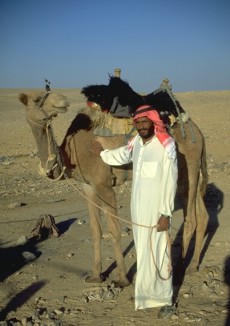
undefined
In my paper on Nabataean trade routes, I examine many of these routes in detail, especially the routes used by the Nabataeans for transporting frankincense. In that paper I demonstrate that the Nabataeans moved frankincense and myrrh from southern Arabia by boat. However, due to the unfavorable wind and current conditions in the Gulf of Aqaba, they landed their cargoes at a port, known as Leuke Kome, and moved it north from there by camel caravan. Ancient historians, writing from a western perspective, simply saw the caravans arriving in the cities of Alexandria, Gaza and Damascus, and deducted that the Nabataeans moved their cargoes all the way from Arabia Felix by camel caravan. The Nabataeans did not contradict these deductions, but enhanced them to stress the difficulty in obtaining their cargoes, and thus justified the high price they were asking for their wares.
Camel with Saddle
Moving goods by land was a very expensive undertaking. In Diocletian’s Rome, it was cheaper to ship wheat from Alexandria to Rome, at a distance of some 1,250 miles, than to transport it fifty miles by land. (A. H. M. Jones, *The Economic Life of the Towns of the Roman Empi*re, page 164, compare N. Steensgaard, Carackers, Caravans and Companies, page 40).
This fact has been long overlooked by Middle Easterners, who had a desire to demonstrate the importance of various cities. Recent studies have demonstrated some of the difficulties of cross Arabia trade. Patricia Crone, in her book, Meccan Trade and the Rise of Islam, (Page 6) tells us that the caravans which traveled along the Arabian route from Yemen to Gaza, stopped at least sixty five times on the way. She insists that the camel caravans did not stop at cities such as Mecca and quotes Bulliet, Camel and the Wheel, (page 105) who states “On a journey of some two months duration, the concept of a halfway point as a natural resting place is rather strained.” Crone also points out that Groom estimated that the incense route must have by-passed Mecca by some one-hundred miles.
Ancient camel caravans traveled about 40 miles a day, if they traveled around ten hours at a speed of four miles an hour. Some people have argued that camels can go faster, but in the case of a loaded camel caravan, the caravan drives usually walked, and the camels carried the heavy loads. This speed is in keeping with the story recorded by Ibn Hisham about Mohammed’s alleged journey to Jerusalem by night. The long distance route from Najran to Gaza was roughly 1,250 miles. A caravan took a month to go to Syria and a month to return, as the Meccans stated when they objected to Mohammed’s claimed to have visited Jerusalem by night from Mecca. (Ibn Hisham, Leben 264)
According to ancient historians, the frankincense and myrrh harvest was about 3000 tons per year. If this frankincense was moved all at once from Leuke Kome port to the ports in the north then this bulky material would have had to have been loaded on more than 3000 camels.
If this is true, then the 3000 plus camels would have required watering pools of 240,000 liters to water them (3000 camels x 80 liters each) at each stop. (This would be equivalent to 63,400 US gallons.) Since the caravans would have moved during the summer months then the camels would have needed to stop every day or second day. Some of these watering stations can be found in the deserts of Saudi Arabia and the Hisma desert in southern Jordan. The others are still lost in the desert, but further exploration should soon reveal their locations, as well as that of Leuke Kome.
The Nabataeans must have invested a great deal of time and energy into the breeding and raising of camels, in order to have maintained camel caravans of this size. Not only would the Nabataeans have required camels for their caravans, they would have also needed to maintain herds of female camels. These camels would have been birthing young, (remember that camels carry their unborn calf for a full year), and also nursing young calves for several years.
If the Nabataeans also maintained camel cavalry, and provided camels for the caravan drivers to ride, then we must add many more camels to the Nabataean camel population.
Bibliography
Abu Madi, Iliya, Diwaan, Beirut, 1982
Al Balaadhuri, Futuuh al buldaan, edited by M.J. de Goeje, Leiden, 1866
Boris, G., Le Chameau les Maraziq, Tunis 1951, page 63
Bulliet, Richard W., The Camel and the Wheel, Cambridge, Mass., 1975
Carackers, N. Steensgaard, Caravans and Companies,
Crone, Patricia, Mecan Trade and the Rise of Islam
Doughty, Charles M., Travels in Arabia Deserta, 2 volumes, new and definitive edition, London, 1936
Dhu l-Rumma, Abul-Harith Ghaylan ibn ‘Uba Diwan, edited by Charlie Henry Hayes Macartney, Cambridge, 1919, page 638
Gauthier-Pilters, Hilda and Dagg, *The Came*l, Chicago and London, 1981
Hitti, Philip K. History of Syria, London
Hitti, Philip K., History of the Arabs, Expanded edition and Arabic translation by Philip K. Hitti, Edward Jurji and Jibrail Jabbur, Ta’rikh al’aran, Beirut, 1965, Tenth English Edition, London, 1971
Ibn Hisham, Leben 264
Ibn Qutayba, ‘Uyuun al-akhbaar, I, 142, al Tabari, Tariikh, I, 2111-2112
Jabbur, Jibrail, The Bedouins and the Desert, translated by Lawrence I Conrad, State University of New York Press, 1995
Jones, A.H. M., The Economic Life of the Towns of the Roman Empire
Leonard, Arthur G., The Camel, London and New York, 1894
Luckenbill, Daniel D. Ancient Records of Assyria and Babylonia, 2 volumes Chicago, 1927
McClure, Harold A., The Arabian Peninsula and Prehistoric Populations, Miami, 1971,
Musil, Alois, Arabia Deserta, New York, 1927
Musil, Alois, Manners and Customs of the Rwala Bedouins, New York, 1928
Oppenheim, Max von, Der Tell Halaf, Leipzig, 1931
Ripinsky, Michael, Camel Ancestry and Domestication in Egypt and the Sahara, Archaeology, 36, 1983, pages 21-27
Ripinsky, Michael, *The Camel in Ancient Arabia, Antiqu*ity, 49, 1975, pages 295 - 298
Ripinsky, Michael. Pleistocene Camel Distribution in the Old World, Antiquity, 56, 1982, pages 48 - 50
Schmidt-Nielsen, Knut, The Psychology of the Camel Scientific American, 201.6, December 1959
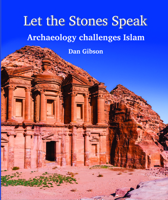
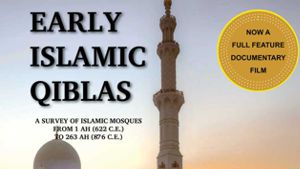

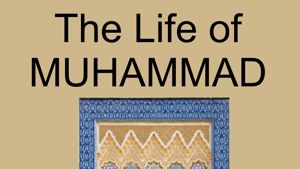
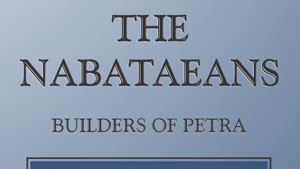



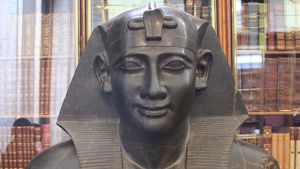
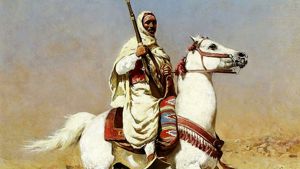
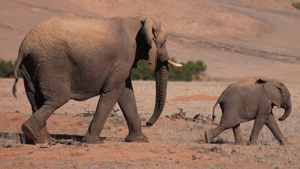
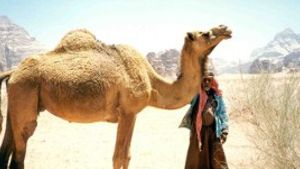

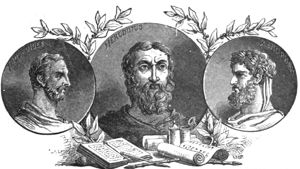
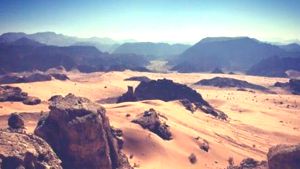

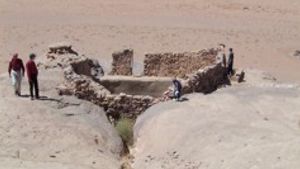
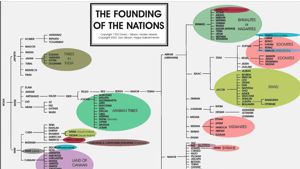
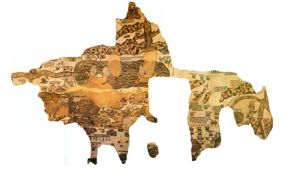
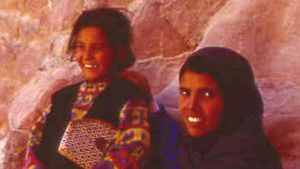
Page Discussion
Membership is required to comment. Membership is free of charge and available to everyone over the age of 16. Just click SignUp, or make a comment below. You will need a user name and a password. The system will automatically send a code to your email address. It should arrive in a few minutes. Enter the code, and you are finished.
Members who post adverts or use inappropriate language or make disrespectful comments will have their membership removed and be barred from the site. By becoming a member you agree to our Terms of Use and our Privacy, Cookies & Ad Policies. Remember that we will never, under any circumstances, sell or give your email address or private information to anyone unless required by law. Please keep your comments on topic. Thanks!